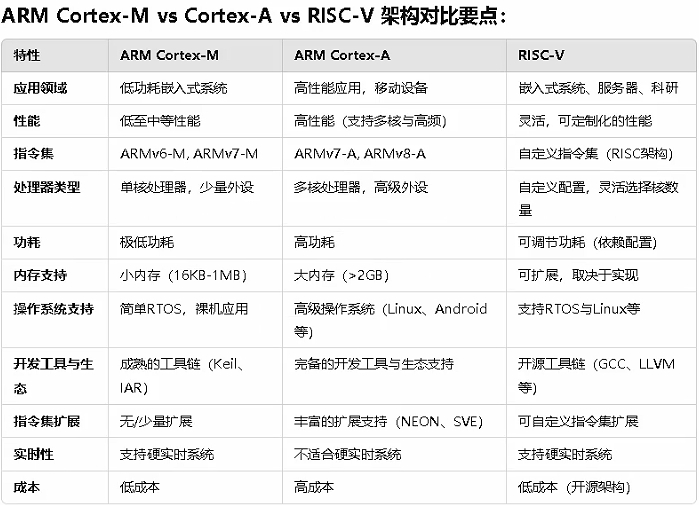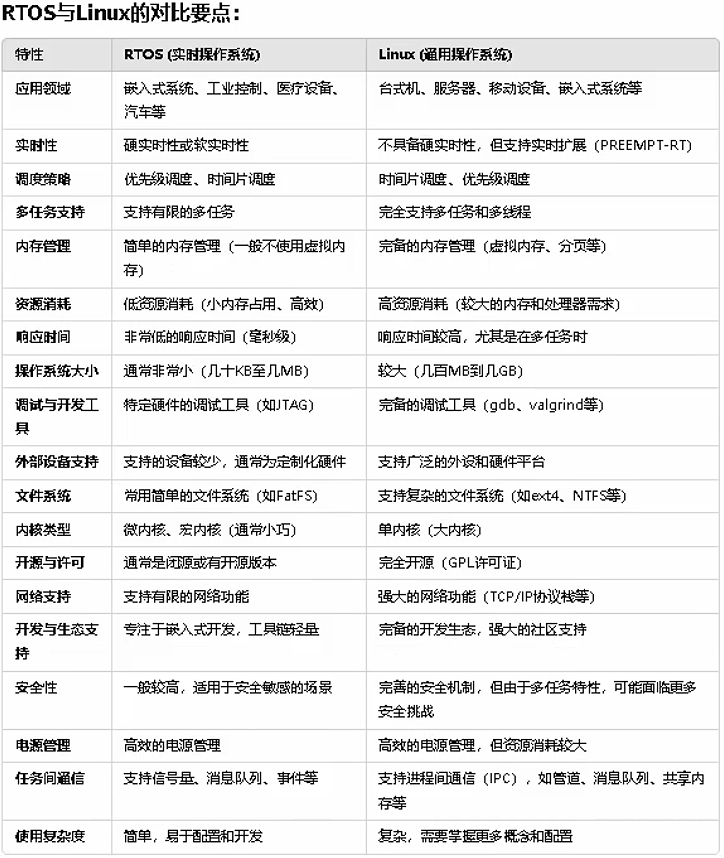From Hardware to Software: Key Technologies and Best Practices in Embedded Systems Development
- latest articles
- 1.DApp Development & Customization: Merging Diverse Market Needs with User Experience 2.Analysis of the Core Technical System in DApp Project Development 3.How to achieve cross-chain interoperability in Web3 projects? 4.How does the tokenization of points reconstruct the e-commerce ecosystem? 5.How to Set and Track Data Metrics for a Points Mall? 6.What is DApp Development? Core Concepts and Technical Analysis 7.Inventory of commonly used Web3 development tools and usage tips 8.Development of a Distribution System Integrated with Social E-commerce 9.Six Key Steps for Businesses to Build a Points Mall System 10.What is DApp Development? A Comprehensive Guide from Concept to Implementation
- Popular Articles
- 1.Future Trends and Technology Predictions for APP Development in 2025 2.Analysis of the DeFi Ecosystem: How Developers Can Participate in Decentralized Finance Innovation 3.From Zero to One: How PI Mall Revolutionizes the Traditional E-commerce Model 4.DAPP Development | Best Practices for Professional Customization and Rapid Launch 5.Recommended by the Web3 developer community: the most noteworthy forums and resources 6.From Cloud Computing to Computing Power Leasing: Building a Flexible and Scalable Computing Resource Platform 7.How to Develop a Successful Douyin Mini Program: Technical Architecture and Best Practices 8.Shared Bike System APP: The Convenient Choice in the Era of Smart Travel 9.How to Create a Successful Dating App: From Needs Analysis to User Experience Design 10.From Design to Development: The Complete Process of Bringing an APP Idea to Life
Embedded systems have become an indispensable part of modern technology, ubiquitous from smartphones to home appliances, from automobiles to industrial equipment. Embedded systems are typically composed of both hardware and software, with the hardware providing fundamental computing power and external interfaces, while the software enables specific functionalities and intelligence. The development of embedded systems involves not only hardware design but also requires specific techniques and best practices in software development to ensure efficient, stable, and secure operation.
This article will explore key technologies and best practices in embedded system development from both hardware and software perspectives, helping developers comprehensively understand how to build an efficient embedded system from hardware to software.
I. Embedded Hardware Design: The Foundation of the System
Hardware design is the first step in embedded system development, determining the system's fundamental capabilities and performance. It requires consideration not only of the selection of basic components like processors, memory, and peripherals but also factors such as power consumption, response time, and reliability.
1.1 Selecting the Appropriate Processor
The processor (CPU) is the core of embedded hardware. Choosing the right processor directly impacts the system's computing power and power consumption. Developers need to decide whether to use a high-performance processor or a low-power processor based on project requirements.
High-Performance Processors: Suitable for computation-intensive applications such as image processing, video encoding/decoding, etc. Common high-performance processors include the ARM Cortex-A series, x86 architecture, etc.
Low-Power Processors: Suitable for devices with strict power requirements, such as portable devices and sensor nodes. Common low-power processors include the ARM Cortex-M series, RISC-V, etc.

1.2 Memory and Peripherals
The memory design of an embedded system directly affects its response speed and data storage capacity. Common types of memory include ROM, RAM, Flash, etc., each with different characteristics and suitable application scenarios.
ROM (Read-Only Memory): Typically used to store system firmware or bootloaders.
RAM (Random Access Memory): Used for storing runtime data, affecting program execution speed.
Flash Storage: Used for storing large-capacity data, commonly used for data storage and firmware updates.
Additionally, embedded systems often need to connect with external devices (such as sensors, displays, communication modules, etc.), which requires consideration of interface design. Common interface standards include I2C, SPI, UART, etc.
1.3 Power Management and Optimization
Embedded devices are often constrained by battery power, making power optimization a critical issue in hardware design. Effective power management not only extends battery life but also enhances system stability. During hardware design, developers need to adopt the following strategies:
Selecting Low-Power Components: Such as low-power processors, low-power peripherals, etc.
Dynamic Power Management: Controlling power consumption through system sleep modes, dynamic clock frequency adjustment, etc.
Optimizing Power Supply Management: Using efficient power management chips to reduce battery consumption.

II. Embedded Software Development: Enabling Hardware Intelligence
Embedded software development is the key step in transforming hardware capabilities into practical applications. Embedded software requires not only operating system support but also efficient algorithms and drivers to ensure the proper functioning of hardware devices. The following are key technologies and best practices in embedded software development.
2.1 Operating System Selection and Porting
In embedded systems, the operating system (OS) provides fundamental task scheduling, resource management, and communication mechanisms. Selecting the appropriate operating system is a crucial aspect of embedded software development.
Real-Time Operating System (RTOS): Suitable for applications with high real-time requirements, such as industrial control, medical devices, etc. RTOS ensures tasks are completed within strict time constraints. Common RTOS include FreeRTOS, RTEMS, etc.
Bare-Metal System: For resource-constrained, functionally simple devices, developers may choose to develop directly in a bare-metal environment without an OS. This approach minimizes system overhead and is suitable for some simple embedded applications.
Embedded Linux: Suitable for embedded devices requiring higher performance and complex functionalities, such as smartphones, routers, TV set-top boxes, etc. Linux's openness and powerful features make it widely used in embedded systems.

2.2 Driver Development
Hardware devices in embedded systems typically require drivers for control. Driver development must be based on the specific characteristics of the hardware and interface standards to ensure efficient communication between hardware and software.
Driver development typically includes the following steps:
Hardware Register Programming: Controlling hardware device behavior by reading from and writing to hardware registers.
Interrupt Handling: Many hardware devices communicate with the CPU via interrupt mechanisms; drivers need to handle various interrupt events.
Interface Protocol Implementation: Writing corresponding drivers based on the peripheral's communication protocol, such as I2C, SPI, UART, etc.
2.3 Performance Optimization and Memory Management
In embedded systems, due to limited resources, performance optimization and memory management are crucial. Developers need to employ the following techniques to ensure efficient system operation:
Task Scheduling Optimization: In RTOS, the efficiency of task scheduling directly affects system real-time performance. Developers need to reasonably design task priorities, task switching strategies, etc., to reduce scheduling overhead.
Memory Optimization: Since embedded devices typically have limited memory, memory management must be very careful. Developers can reduce memory usage through techniques like memory pools, memory compression, etc.
Algorithm Optimization: Efficient algorithms can significantly enhance the performance of embedded systems. For example, when processing sensor data, developers can use filtering algorithms, compression algorithms, etc., to optimize data processing efficiency.
2.4 Security and Stability
With the proliferation of embedded devices, security and stability have become increasingly important. Developers need to consider security from the design phase to prevent devices from being attacked or failing. The following are common security techniques and strategies:
Data Encryption: Protecting data transmission and storage security through encryption algorithms.
Firmware Updates: Embedded devices need to support remote firmware updates to promptly fix vulnerabilities and optimize performance.
Fault Detection and Recovery: Embedded systems need to have automatic fault detection and recovery mechanisms to ensure devices can continue operating normally under abnormal conditions.
III. Best Practices in Embedded System Development
To ensure efficient development and reliable operation of embedded systems, developers need to follow some best practices. These practices not only improve development efficiency but also reduce errors and risks during the development process.
3.1 Precise Requirements Analysis and Design
The design of embedded systems should start with requirements analysis, clearly defining functional requirements, performance indicators, and hardware resource constraints. Through precise requirements analysis, developers can avoid unnecessary complexity in design and ensure the system meets end-user expectations.
3.2 Modular Design and Maintainability
Both hardware and software design of embedded systems should follow modular principles, decoupling components with different functions. This allows developers to perform maintenance and extensions more easily in the later stages of system development.
3.3 Emphasizing Testing and Verification
The development process of embedded systems requires comprehensive testing and verification, including hardware testing, software unit testing, system integration testing, etc. Through rigorous testing, potential issues can be identified and resolved promptly, ensuring system stability.
IV. Conclusion
The development of embedded systems is a complex process involving hardware design, software development, performance optimization, security considerations, and more. Only through precise requirements analysis, reasonable hardware selection, efficient software development, and system optimization can powerful, stable, and efficient embedded systems be created. As technology continues to advance, the applications of embedded systems will become increasingly widespread, serving as a crucial support for the development of various industries.
-

How does artificial intelligence technology transform the operational models of modern enterprises?
In the wave of the digital era, artificial intelligence (AI) technology has tran···
-

How to Utilize Artificial Intelligence for Precision Medicine and Health Management
With the rapid advancement of technology, artificial intelligence (AI) has demon···
-

Integration and Application of Artificial Intelligence and Robotics
In today's era of rapid technological advancement, the integration of artificial···

 Blockchain
Blockchain










